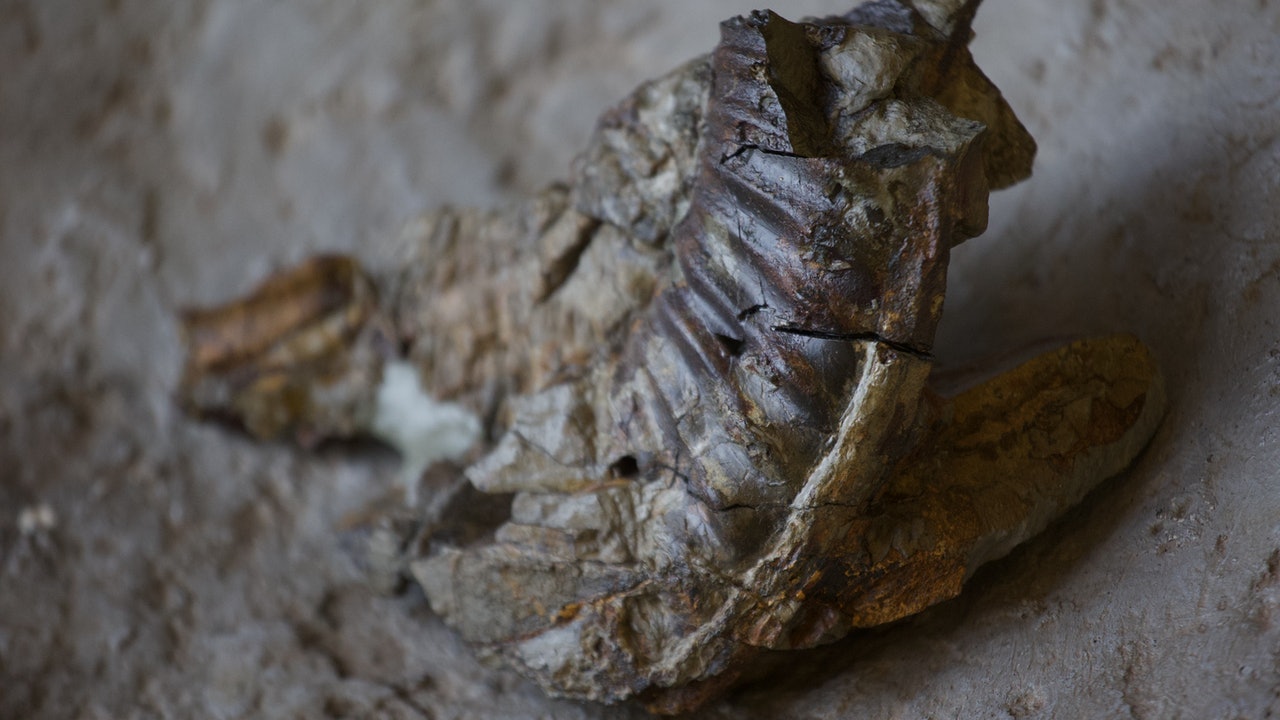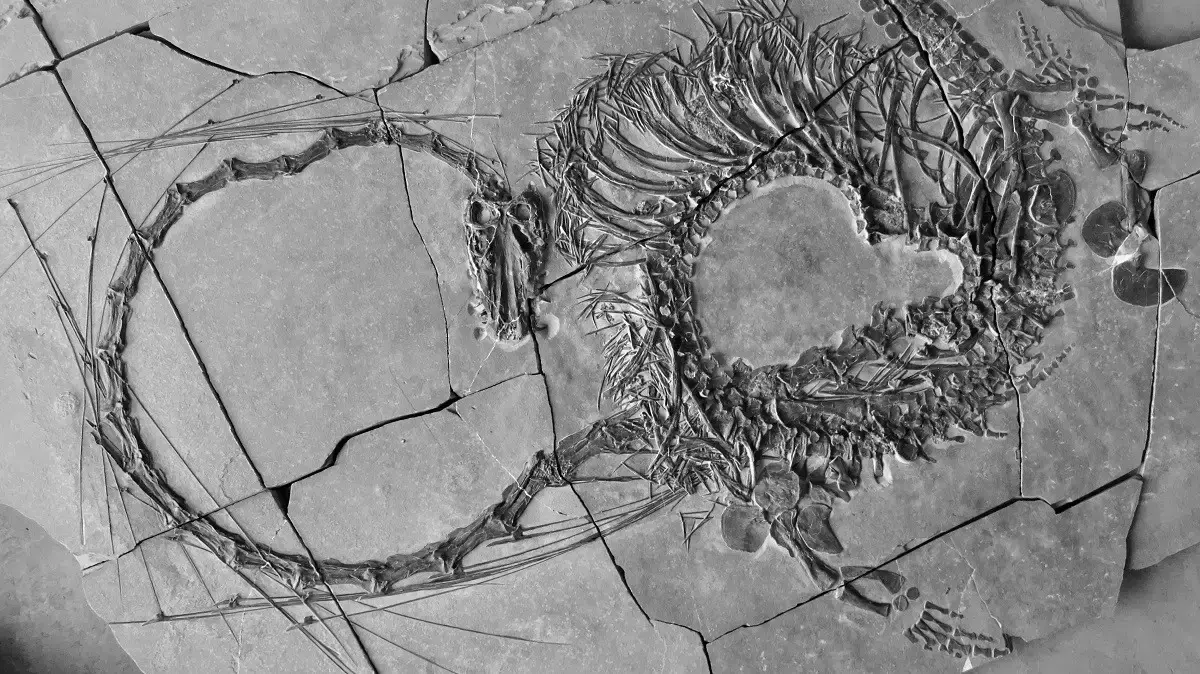Hong Kong's geological heritage is rich and diverse. Following the discovery of a large number of marine fossils, including extinct prehistoric marine mollusks, on a marble brick wall in the lobby of the Shatin MTR station the previous year, a recent geological expedition project co-operated by geologists and paleontological fossil workers has The largest ammonite fossils recorded in Hong Kong and the largest local biological trace fossils were also found in the northern part of Sai Kung and Tai Po Hoi. Experts describe it as an important discovery, which enables researchers to better understand Hong Kong's prehistoric ecological environment. Fossil specimens are collected in the Hong Kong Science Museum and the University of Hong Kong for other geologists and paleontologists to participate in research.
Chen Longsheng (left), Honorary Professor of the Department of Earth Sciences of the University of Hong Kong, and Long Dejun (right), a paleontological fossil worker, have been conducting geological work and collecting rock specimens for the Hong Kong Science Museum and the Hui Shifen Geological Museum of the University of Hong Kong.
(Photo by Liang Pengwei)
Chen Longsheng, Honorary Professor of the Department of Geosciences of the University of Hong Kong, and Paleontology fossil worker Long Dejun have been conducting geological work and collecting rock specimens for the Hong Kong Science Museum and the Xu Shifen Geological Museum of the University of Hong Kong. There is good news recently.
During this geological expedition, some researchers found some paleontological fossil specimens, ranging in age from Devonian to Jurassic. Among them, the Ammonite fossil found in the northern part of Sai Kung, the original body size of the specimen is estimated to be long. About 30 cm to 35 cm, it is the largest body recorded in Hong Kong.
Long Dejun pointed out that ammonites live in the ocean and are cephalopod mollusks that went extinct 66 million years ago like dinosaurs.
This ammonite has a bulge near the edge of each segment, believed to be a thorn, with a flat ridge around the hard shell, a feature that is not common in general ammonites.
Professor Chen Longsheng revealed that the stratum where this ammonite fossil was found belongs to the Tolo Channel formation, which belongs to the early Jurassic period, about 190 million years ago.
The ammonite fossil found in the northern part of Sai Kung is estimated to be about 30 cm to 35 cm in length, the largest in Hong Kong records.
(Photo by Liang Pengwei)
Trace fossils from the Taipu Sea help determine whether the strata belong to marine or terrestrial facies
Another trace fossil found on an island in Tolo Harbour, Tai Po Sea, is covered in the late Permian, that is, the footprints left by creatures walking about 250 million years ago, as well as the digging of tunnels in the mud layer. Drilling tracks, Long Dejun pointed out, may have been left by creatures such as worms, arthropods or echinoderms.
The fossil is about 34 centimeters by 21 centimeters by 4 centimeters in size, making it the largest trace fossil ever found in Hong Kong.
Professor Chen Longsheng said that this discovery will help to study the ecological appearance of the Permian period. Since plant fossils have been found on the island in the past, some geologists have judged that the place is a terrestrial stratum. However, these creatures generally lived in the near shallow sea or The muddy place has great reference value to determine whether the stratum belongs to marine facies or continental facies.
Trace fossils found on an island in Tolo Harbour, Tai Po Sea, are covered in the late Permian, about 250 million years ago, the footprints left by living creatures walking, as well as the drilling tracks of digging tunnels in the mud. , Long Dejun pointed out, may have been left by creatures such as worms, arthropods or echinoderms.
Red is the footprint, blue is the drill track.
(Long Junsheng provides restoration pictures)
Another fossil specimen is an Ostracod fossil found in the Plover Bay Freshwater Lake, which belongs to the Devonian period, that is, about 400 million years ago.
Prof. Chen Lung-sang pointed out that the Bluff Head Formation in the vicinity of Plover Cove Freshwater Lake is the oldest stratum in Hong Kong. The fossils of the Chinese Dou Shijie group discovered this time are very rich ostracods.
Long Dejun pointed out that ostracods are small crustaceans whose mollusks are protected by two-lobed shells, and their bodies are usually within 1 cm.
The two said that a lot of fossil specimens were discovered during this geological expedition. Since restoration takes time, the research can only be continued after the restoration process is completed.
Professor Chen Longsheng described that Hong Kong's geological heritage is rich and diverse, but many fossils excavated in Hong Kong have been transported to foreign countries for research. It is hoped that the fossil specimens found in this expedition can be collected in local museums and science museums for future use. Geology and paleontologists for research.
(Photo by Liang Pengwei)
Professor Chen Longsheng described that Hong Kong's geological heritage is rich and diverse, but many fossils excavated in Hong Kong have been transported to foreign countries for research. It is hoped that the fossil specimens found in this expedition can be collected in local museums and science museums for future use. Geology and paleontologists for research.
The two stressed that any rock collection in Hong Kong must first apply for a permit from the Antiquities and Monuments Office, calling on the public not to dig by themselves.
↓↓In 2020, a large number of marine fossils were found in the marble pillars in the lobby of Shatin Station↓↓
+5
In ancient times, there was the Marble Wall of Windsor Building, the legend of Fox Fairy, and the Marble Pillar in the lobby of Shatin Station. The Avengers Project also had a wonderful scene. The Tai Tam exposure measurement technology of World War II bomber wreckage was applied to archeology to restore the history of the Avengers Project. fighter excitement
01 Community







